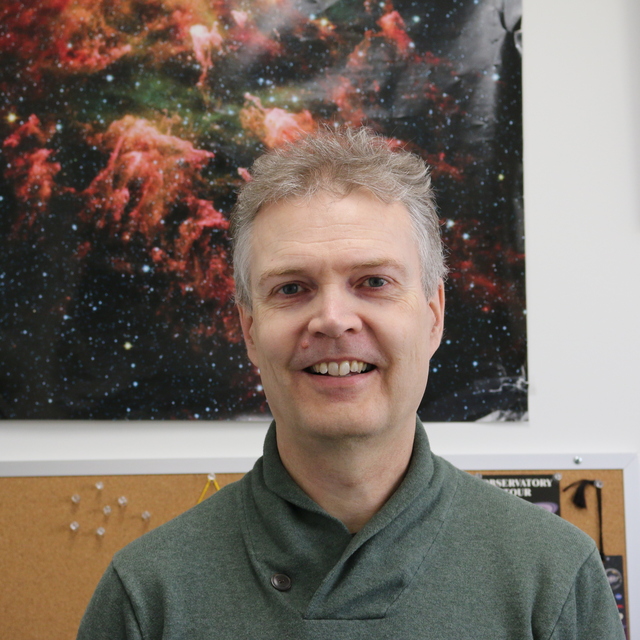
Near-Infrared Line Imaging of the Circumnuclear Starburst Ring in NGC 7771
February 2000 • 2000ApJ...529..853R
Abstract • We present high spatial resolution near-infrared broadband JHK images and, for the first time, Brγ 2.1661 μm and H2 1-0 S(1) 2.122 μm emission-line images of the circumnuclear star-forming ring (major axis diameter 7''=2 kpc) in the starburst galaxy NGC 7771. These data are used to investigate the morphology and extinction of the starburst ring and to study its star-forming properties and history by comparing the observed quantities with an evolutionary population synthesis model. The clumpy morphology of NGC 7771 varies strongly with wavelength, as a result of the combination of extinction (for which we derive an average value of AV=2.8), emission from hot dust and red supergiants, and several stellar generations in the ring. Also, the ellipticity and the position angle of the ring depend on the wavelength. The starburst ring in NGC 7771 exhibits small Brγ equivalent widths. Assuming a constant star formation model with Mu=100 Msolar results in very long lifetimes of the star-forming regions (up to 1 Gyr), in disagreement with the clumpy near-infrared morphology and the observed radio spectral index of NGC 7771. This situation is only slightly remedied by assuming a reduced upper mass cutoff (Mu=30 Msolar), resulting in ages between 8 and 180 Myr. We prefer an instantaneous star formation model with Mu=100 Msolar, which can explain the derived Brγ equivalent widths if a single starburst occurred 6-7 Myr ago. The main excitation mechanism of the molecular gas, based on the observed S(1)/Brγ ratio, appears to be excitation by UV radiation from hot young stars. We derive M~=1900 Msolar for the mass of the excited H2.
Links



